Bones of Beauty: Inlaid Bone Furniture
The History
Bone Inlay is a technique that involves fixing intricate, hand-carved pieces of camel bone and/or mother-of-pearl into a wooden frame, which is then filled with a (sometimes colored) resin. It derives from the ancient craft of intarsia, which the Egyptians used to decorate wood as far back as 3000 years ago. The tomb of Pharaoh Tutankhamon is filled with objects adorned with intarsia. This ancient craft can also be found among Ancient Mayan artifacts, and was found across the Orient (Persia, China, Japan, India), until finally arriving in Europe during the 16th Century. In the past, bone and mother-of-pearl inlay was an artisan craft, afforded only by the wealthy. Today, advances in manufacturing have meant that bone inlay furniture is much easier to make, and therefore can be affordable. However, hand-made bone-inlay antiques and artisan pieces are still popular, and can cost tens of thousands of euro at auction.
The inspiration
Inlay furniture has long been a staple of eclectic-bohemian decor. Ornate, eye-catching inlaid furniture can give a taste of the East and add a nice amount of detail to a room. However, the beauty of bone-inlay isn't just for those with boho tastes. More neutral or monochrome pieces can also be used achieve a more clean and streamlined look. See the gallery below for inspiration.
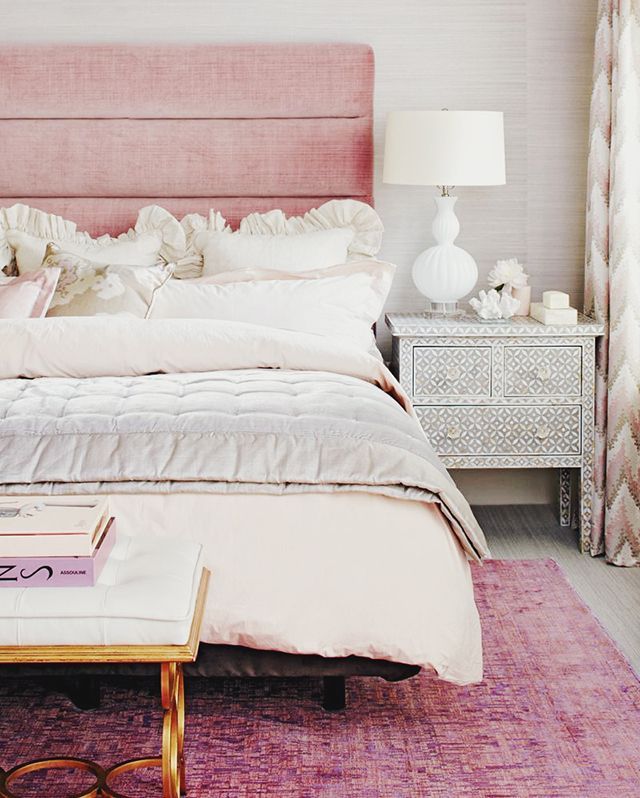
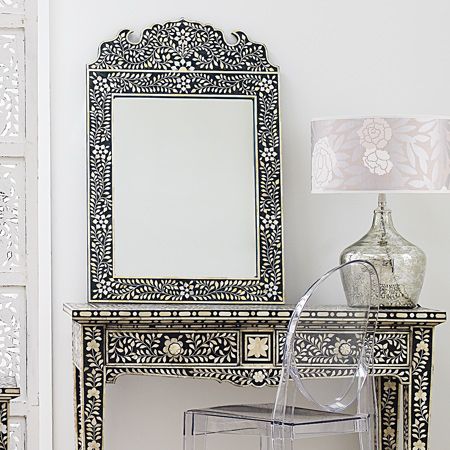
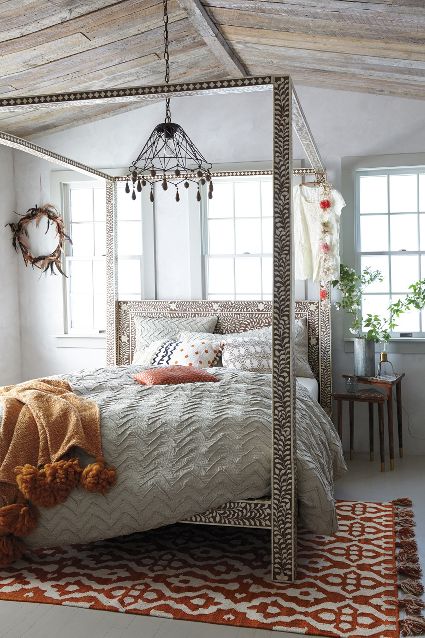
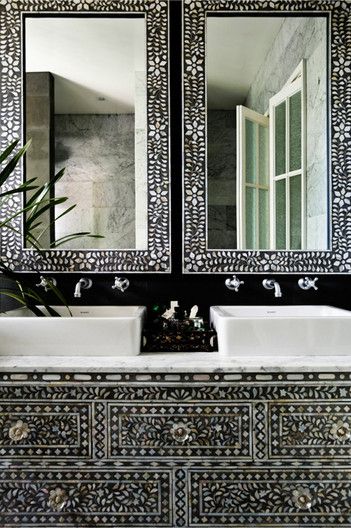
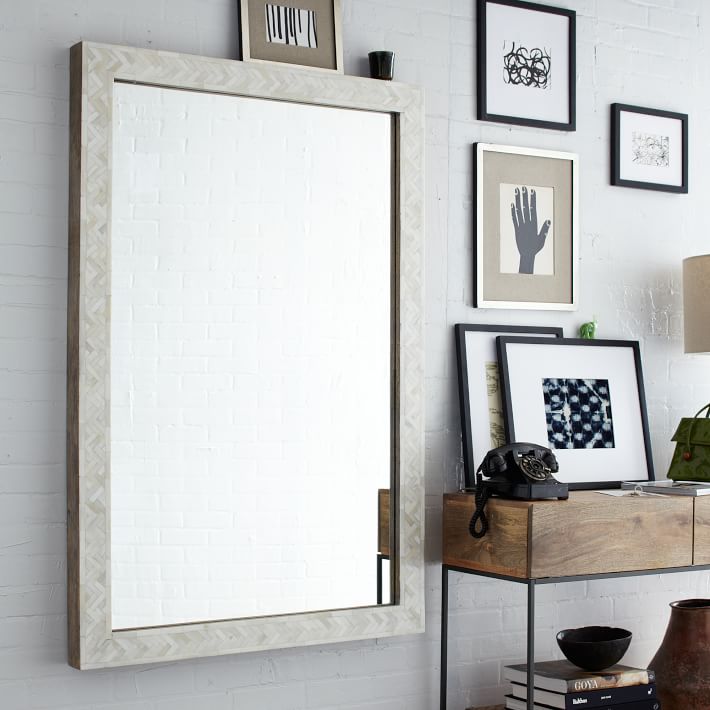
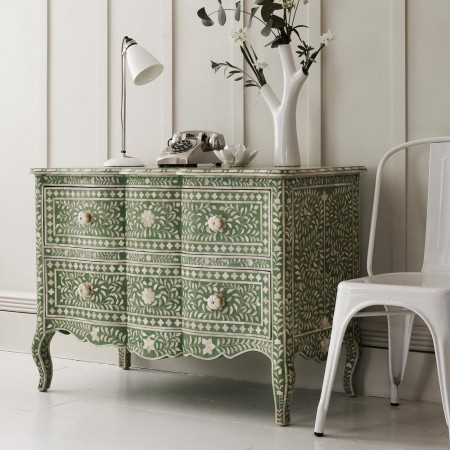
The pieces
Below are some of our favourite bone inlay pieces, ranging from affordable bedside lockers to masterpieces (that are unaffordable to most!).
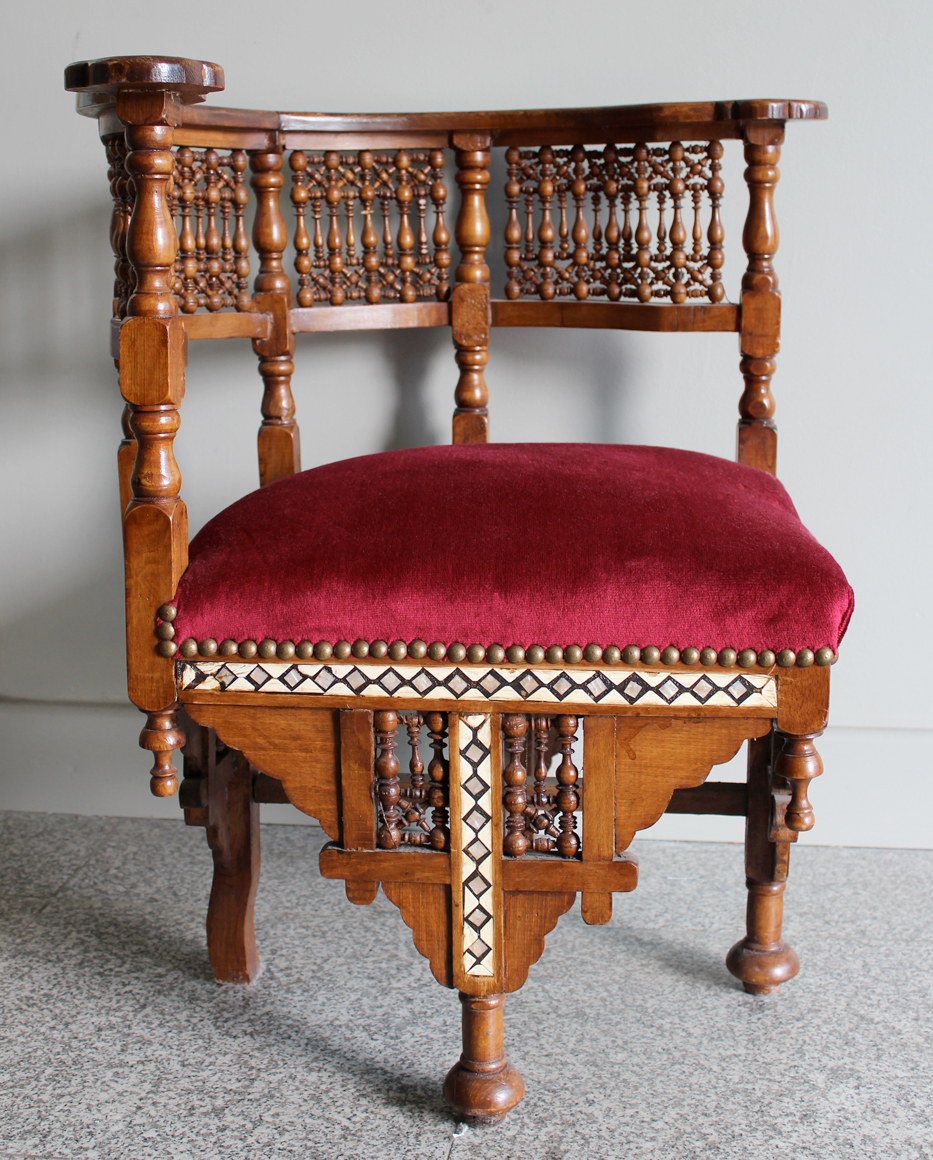
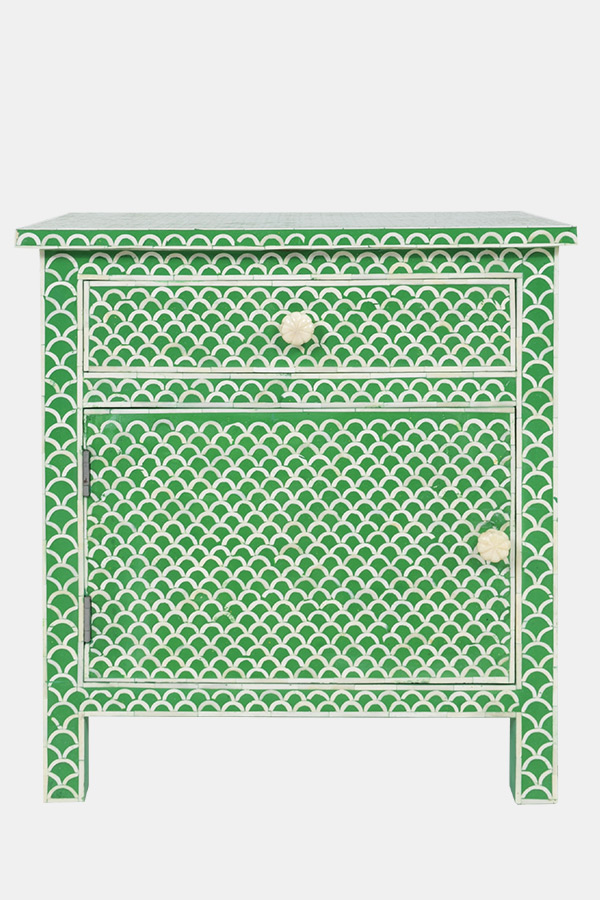
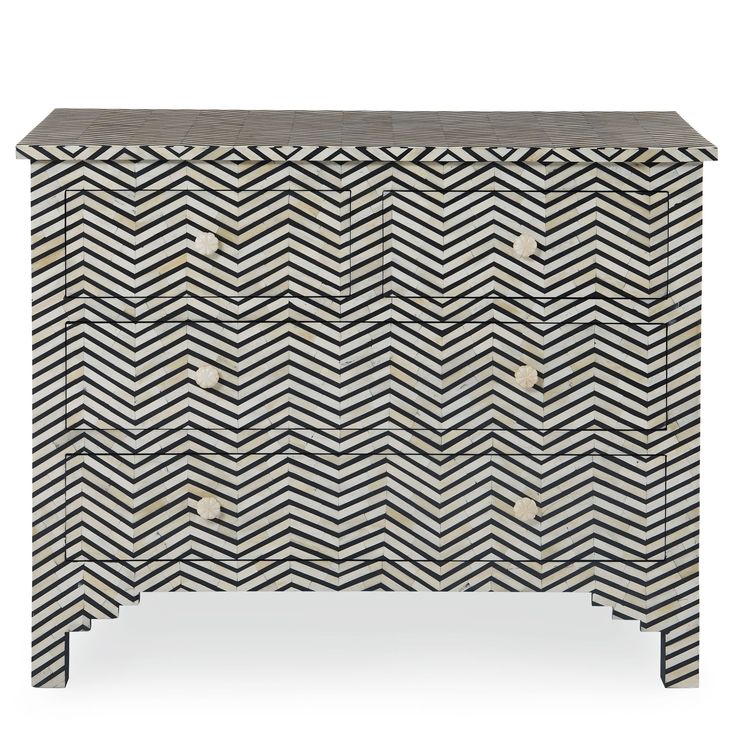
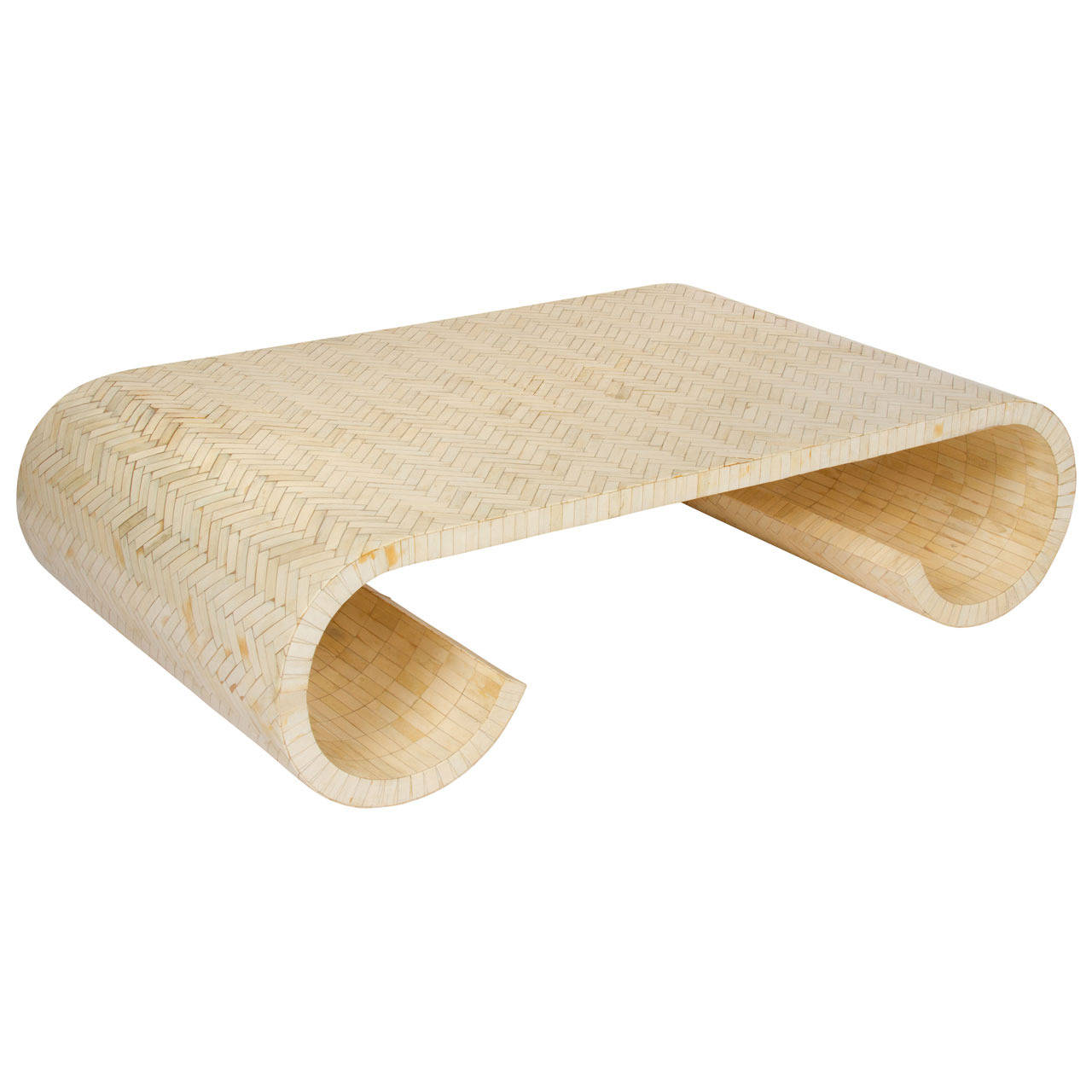
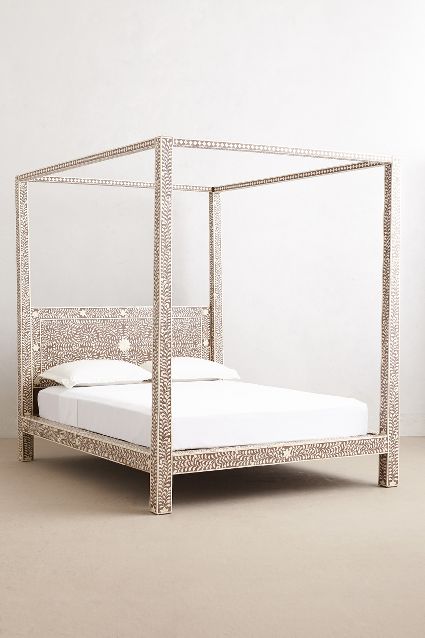
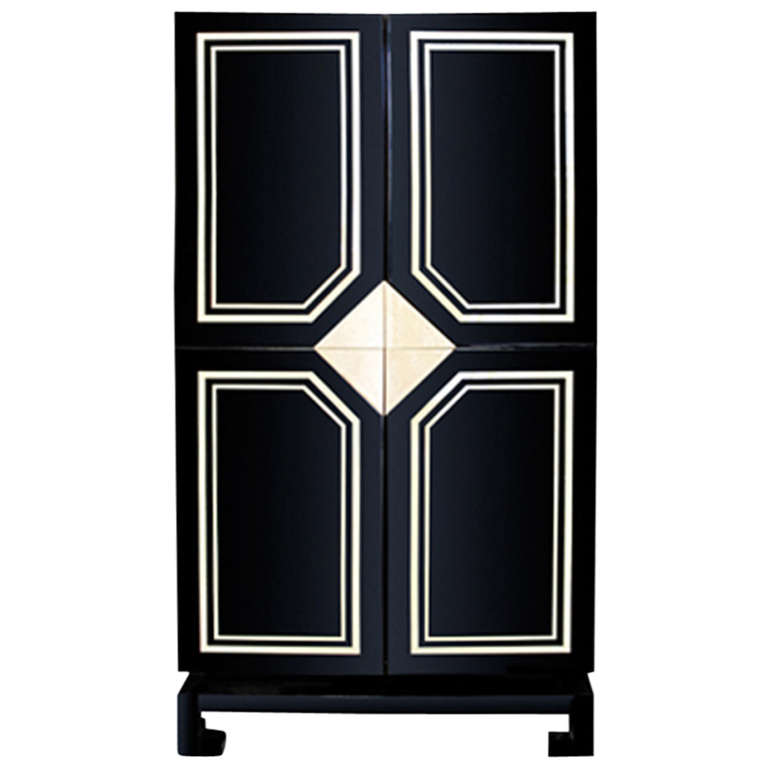
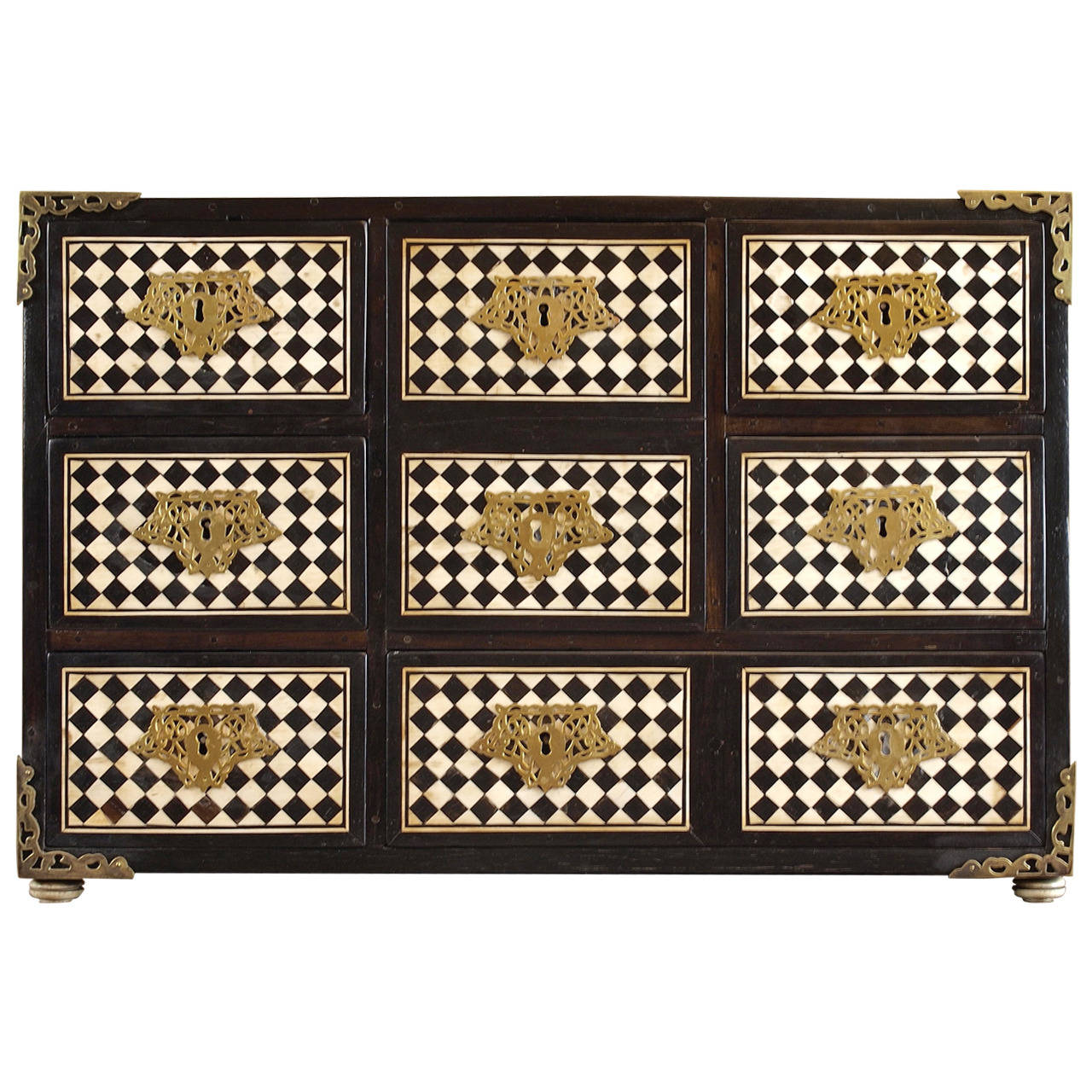
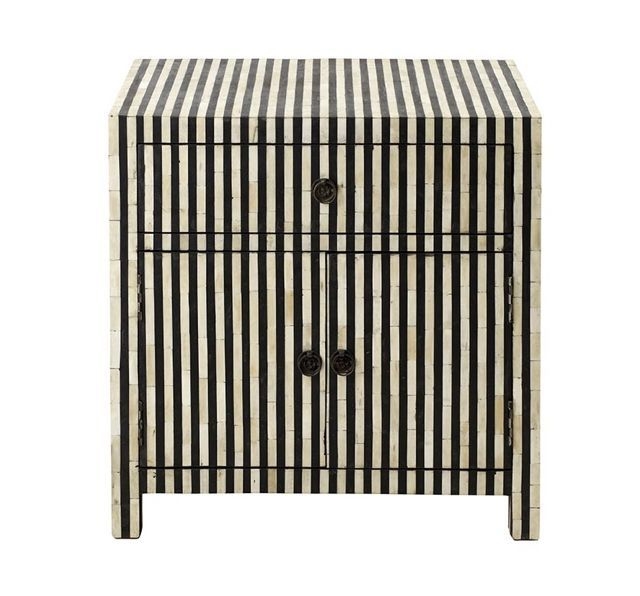

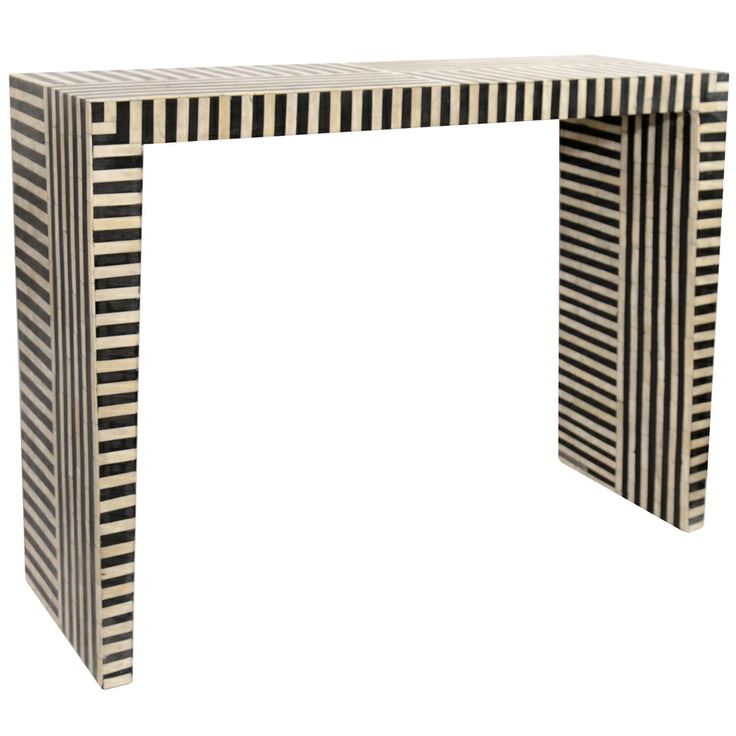
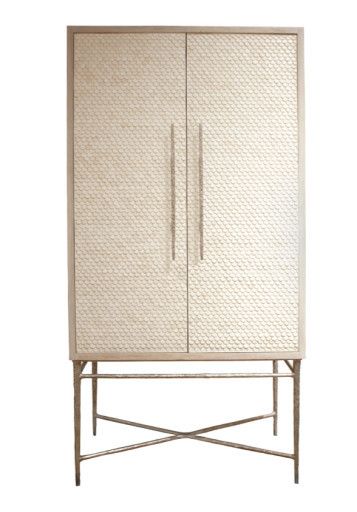
Too much to buy? DIY.
As you may have noticed, these sophisticated specipens come at quite a price. If you would like to upcycle an ordinary piece of furniture to look like an eclectic, inlaid masterpiece, you can buy stenicils and paint on the design. The image below is a great example. You can make your own stencil, or buy one here.
We hope we have inspired and informed you about Inlay furniture!
Happy Decorating,
The Ryle Team x

